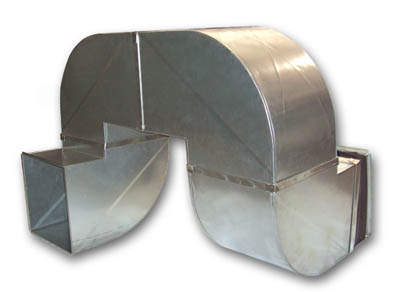A Cross Break in sheet metal is when multiple obtuse Bend Angles of approximately 170° are made across a flat section thin metal. Cross breaks are most commonly in an X shape, forming a slight pyramid shape in the metal without overly distorting it. The crossing ridges stiffen the face of the metal and help prevent is from buckling under a load. When used correctly this bending method offers a very cost effective way of strengthening your parts. Cross breaks are often incorporated on machine enclosures and duct work where the added rigidity reduces noise from vibration or air flow.
The main advantage of the Cross Break is that it allows designers to use thinner Gauges, thus saving money, without compromising the strength of the part. Cross breaks do not need to be an X shape to strengthen a part. Because it is basically as good as adding a small support brace they can be used in place of light bracing for a variety of applications. See below for an example of how Cross Breaks are used along bent faces and in single lines to stiffen the elbow shaped duct work.
Forming a Cross Break
It can be difficult to properly program the back gauges to work with a Cross Break because you are typically going diagonal to the straight edge of the part. For this reason you will usually want to start by marking the bend lines on your metal either by scoring or simply marking it with a marker or pencil. Once you have the desired break lines. You’re going to line them up by eye with the punch tip as it comes down and bends the first bend. The second bend is going to be a bit trickier since you now have a bend line crossing the die. Because the bends are shallow, and you will typically be adding Cross Breaks to lighter gauges, there isn’t a great deal of risk for tooling damage by crossing the die with an existing bend. Cross breaks can also be achieved using a roller ball type tooling on an automatic punch press. This type of automation is always preferable, but not practical unless you have a CNC punch press or other combination type cutting system.
Designing and Engineering a Cross Break
Most design softwares with respectable sheet metal packages will have a specific Cross Break function. Trying to add one bend across the path of another will obviously be difficult for your software to handle so typically they will just draw the bend lines without deforming the metal. The main thing about designing cross breaks is that you shouldn’t really worry about Bend Allowances but rather focus on the deformation. The sheet metal is going to form a pyramid shape, meaning that you can’t effectively run bracing across it, or mate it with another flat face.
